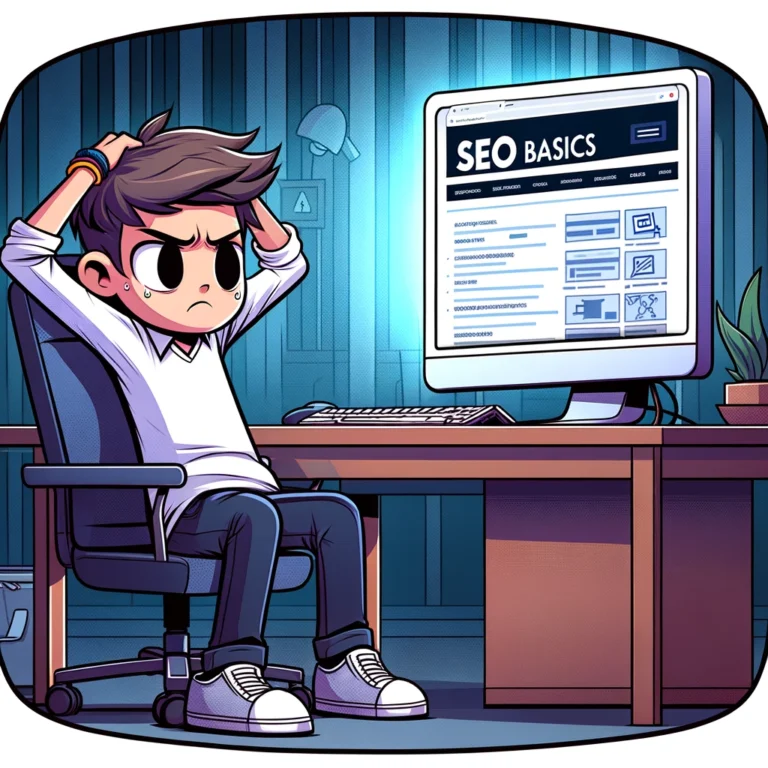Creating SEO-friendly content is essential not just for reaching your target audience but also for engaging them in a way that drives traffic and enhances your website’s visibility in search engines like Google. Whether you’re a blog owner, small business, or a large corporation, understanding the basics of SEO (Search Engine Optimization) is crucial in crafting articles, blog posts, or any content that you wish to optimize for better search engine rankings. Here’s how you can start writing content that is not only engaging but also SEO-friendly.
Understanding SEO Basics
Before diving into content creation, it’s important to grasp the basics of SEO. Essentially, SEO involves optimizing your website so that it appears higher in the search engine results pages (SERPs) for specific keywords or phrases related to your business or content. The goal is to attract organic traffic to your website without relying solely on paid advertising. Effective SEO strategies are built on keywords, high-quality content, user engagement, and technical website performance.
Keyword Research: Your Starting Point
Keyword research is the foundation of SEO. Identifying the right keywords is about understanding what your target audience is searching for and how competitive these terms are in your niche. Tools like Google Keyword Planner, Ahrefs, or SEMrush can help you find relevant keywords. Focus on a mix of broad and long-tail keywords that align with your content’s topic and the interest of your audience. When choosing keywords, think from the perspective of your potential readers. What are they likely to type into a search engine when looking for the information you can provide? This user intent is crucial to selecting keywords that will drive meaningful traffic to your site.
Crafting Your Content
With your keywords selected, it’s time to start creating content. The key to effective SEO writing isn’t just about keyword placement but also about making your content informative, interesting, and relevant. Here are some core principles to guide you:
Write for Humans First, Search Engines Second
Always prioritize your audience over the search engines. Content that’s well-written and engaging will naturally perform better. The moment your content feels forced or overstuffed with keywords, you risk turning readers away. Instead, use keywords naturally within the flow of your text.
Optimize Your Title and Headings
The title of your page is critical since it’s often the first thing a search engine will evaluate to determine the relevance of your content to a search query. Make sure your title is clear, descriptive, and includes a main keyword. Similarly, use headers (H1, H2, H3 tags) throughout your article to structure your content effectively. This not only helps search engines understand the hierarchy and relevance of your information but also improves readability for users.
Focus on Readability
The readability of your content has a direct impact on user engagement. Break your content into manageable paragraphs, use bullet points, and subheadings to allow for easy scanning. Short, concise sentences can help maintain reader interest and reduce bounce rates, which can positively influence your SEO.
Incorporate Links
Linking to reputable, authoritative sources can enhance the credibility of your content and encourage longer engagement times. Internal linking to other pages within your website also helps search engines crawl your site more effectively and keeps users engaged longer by directing them to related content.
Monitoring Your SEO Efforts
Once your content is published, the job isn’t over. Monitoring how your content performs is imperative to understanding the effectiveness of your SEO strategies. Tools like Google Analytics and Search Console can provide insights into your content’s performance, enabling you to refine and adjust your strategy based on real data. Tracking metrics like page views, bounce rates, and time on page can give you a clearer picture of what works and what might need adjustment. In the dynamic field of SEO, staying informed and ready to adapt your strategy based on both analytical data and evolving SEO practices is crucial. As you gain more experience, you’ll find that a blend of creativity, user-focused content creation, and systematic monitoring form the cornerstones of a robust SEO approach that can significantly improve your site’s visibility and traffic.
Enhancing Content with Visuals and Multimedia
Integrating visuals and multimedia into your SEO-friendly content can significantly elevate the user experience and further optimize your content for better search rankings. Images, videos, infographics, and interactive media can help to break up text, illustrate points, and keep the reader engaged. Here’s how you can effectively use multimedia in your content:
Choose Relevant Media
Ensure that the visuals you choose are directly relevant to the content. For instance, if you’re writing about how to set up a home garden, include images or videos showing steps, necessary tools, or finished gardens. This relevance helps your readers to understand your content better and increases the likelihood they will stay longer on your page.
Optimize Image Sizes and Descriptions
Large images can slow down your page loading time, which negatively impacts your SEO. Optimize images by compressing them without losing quality and use the correct file format, like JPEG for high-quality photos or PNG for graphics that require a transparent background. Moreover, always add alt text to your images. Alt text helps search engines understand what the image is about and can also improve web accessibility for users with visual impairments.
Utilize Videos to Increase Engagement
Videos can be incredibly effective for keeping visitors on your page longer, which can signal to search engines that your content is valuable. Embedding a video that summarizes your article or provides additional information can make your content more comprehensive and engaging. Ensure that your video content is also optimized for SEO by including an informative title, a descriptive summary, and relevant tags.

Implement Interactive Elements
Quiz, polls, and interactive infographics can increase user engagement significantly. These elements encourage readers to interact more deeply with the content, providing a more immersive experience. Interactive content not only helps keep users on the page longer but can also aid in higher information retention, making your post more memorable and shareable.Incorporating these multimedia elements into your SEO strategy enhances not only the appeal and effectiveness of your content but also supports better rankings in search results. By making your articles more visually engaging and interactive, you’re likely to see better overall performance in both user engagement and SEO metrics. Each piece of multimedia serves as an opportunity to further optimize your content for the keywords you are targeting, contributing back to your SEO goals.
Engage Through Captioning and Comments
While it’s clear that multimedia can enhance the appeal of your content, further engagement can be achieved through effective captioning and a strategic approach to user comments. By integrating smart, conversational captions that directly relate to the visuals, you can provide additional context or offer insightful commentary that enriches the user’s understanding and appreciation of the content.
Strengthen Visual Messages With Captions
Each piece of media in your content offers a story that extends beyond the visual itself. By pairing strong, narrative-driven captions with your visuals, you are not only tagging these elements for improved SEO but also enhancing the story of your article. Whether it’s a thought-provoking photo, an insightful infographic, or a dynamic video, your captions can compel readers to pause and consider the deeper context or just simply enjoy a clearer explanation of what they’re viewing.
Foster Community and Feedback Through Comments
Encouraging comments on your multimedia content can create a dynamic interaction that benefits your SEO efforts. Comments offer fresh, user-generated content that can update your page regularly and keep it relevant, signaling to search engines that your content remains in active discussion and may be more likely to be prioritized in search results. Moreover, engaging with your audience through comments can build a community around your content, fostering loyalty and repeat visits. Listening to your audience and responding to their interactions can not only provide insights into what content works but also makes users feel valued, which increases the likelihood of shares and recommendation. Through thoughtful captions and active comment sections, your multimedia-content doesn’t just attract attention but also encourages deeper engagement and interaction, helping to mark your content as valuable and relevant in the bustling digital landscape.
Conclusion: Maximizing Engagement Through Strategic Multimedia Use
In today’s digital age, the integration of multimedia content with smart captioning and a robust comment engagement strategy proves imperative in carving out a significant presence online. By enriching each visual element with well-thought-out captions, content creators not only optimize for search engines but also enhance the narrative and emotional appeal of their materials. These captions serve as bridges, connecting the visual story to the audience’s curiosity and intellect, thus deepening their engagement and interaction with the content. Furthermore, a lively and responsive comment section transforms passive viewers into active participants, creating a burgeoning community that revolves around the shared content. This not only amplifies the reach of the material through ongoing discussions but also boosts its relevance and longevity in the fast-paced digital ecosystem. Every comment, whether a question, compliment, or critique, injects new life into the content, keeping it dynamic and forward-facing. As content creators harness the combined power of engaging visuals, compelling captions, and interactive comment sections, they set the stage for a deeper and more meaningful connection with their audience. This strategy not only elevates the quality and appeal of multimedia content but also cements its place in the competitive digital landscape as both valuable and relatable. Thus, by continually refining these elements, creators can effectively capture and sustain the attention of their audience, ensuring their content remains as impactful as it is insightful.
References:
- Fishkin, R. (2022). SEO Tactics for Beginners. New York: Digital Marketing Press.
- Google. (2023). Search Engine Optimization (SEO) Starter Guide. Retrieved from https://developers.google.com/search/docs/beginners/get-started
- Patel, N. (2021). Why Content Marketing Works. Patel Digital LLC.
- Miller, K. L. (2020). Content Strategy Tips: From Beginner to Pro. London: TechMarketeers Ltd.
- Moz. (2023). The Beginner’s Guide to SEO. Retrieved from https://moz.com/beginners-guide-to-seo
- HubSpot. (2022). Guide to Writing SEO-Friendly Blog Posts. Retrieved from https://blog.hubspot.com/marketing/seo-friendly-blog-post



